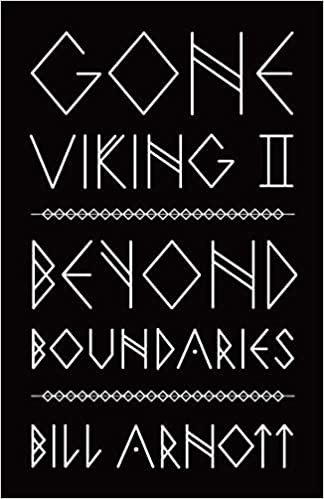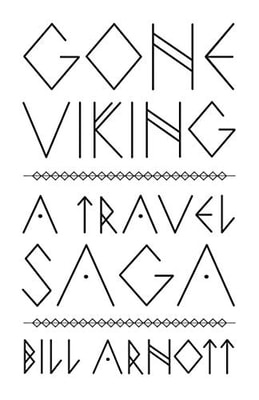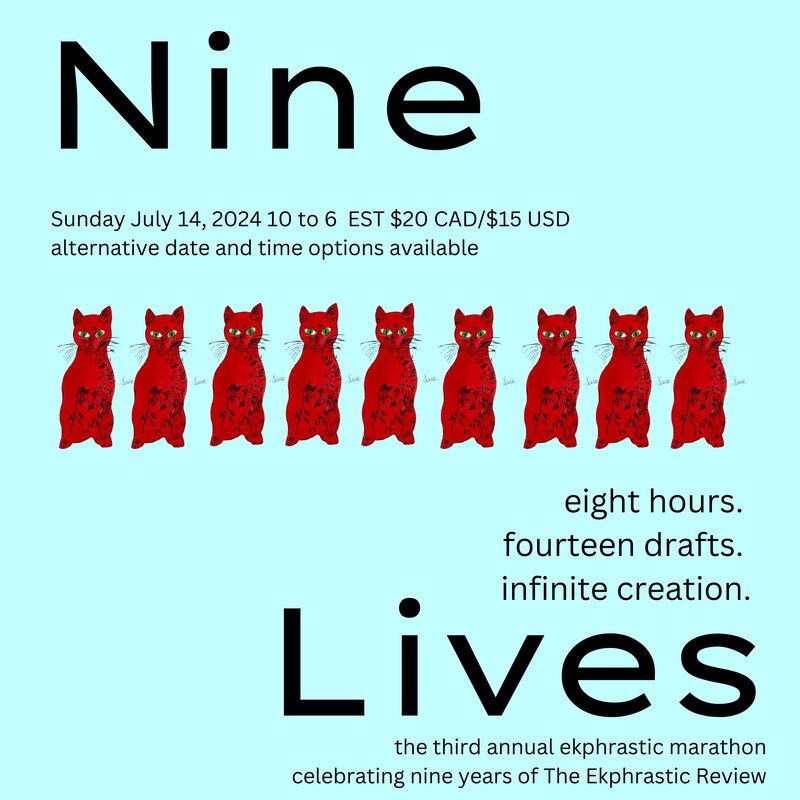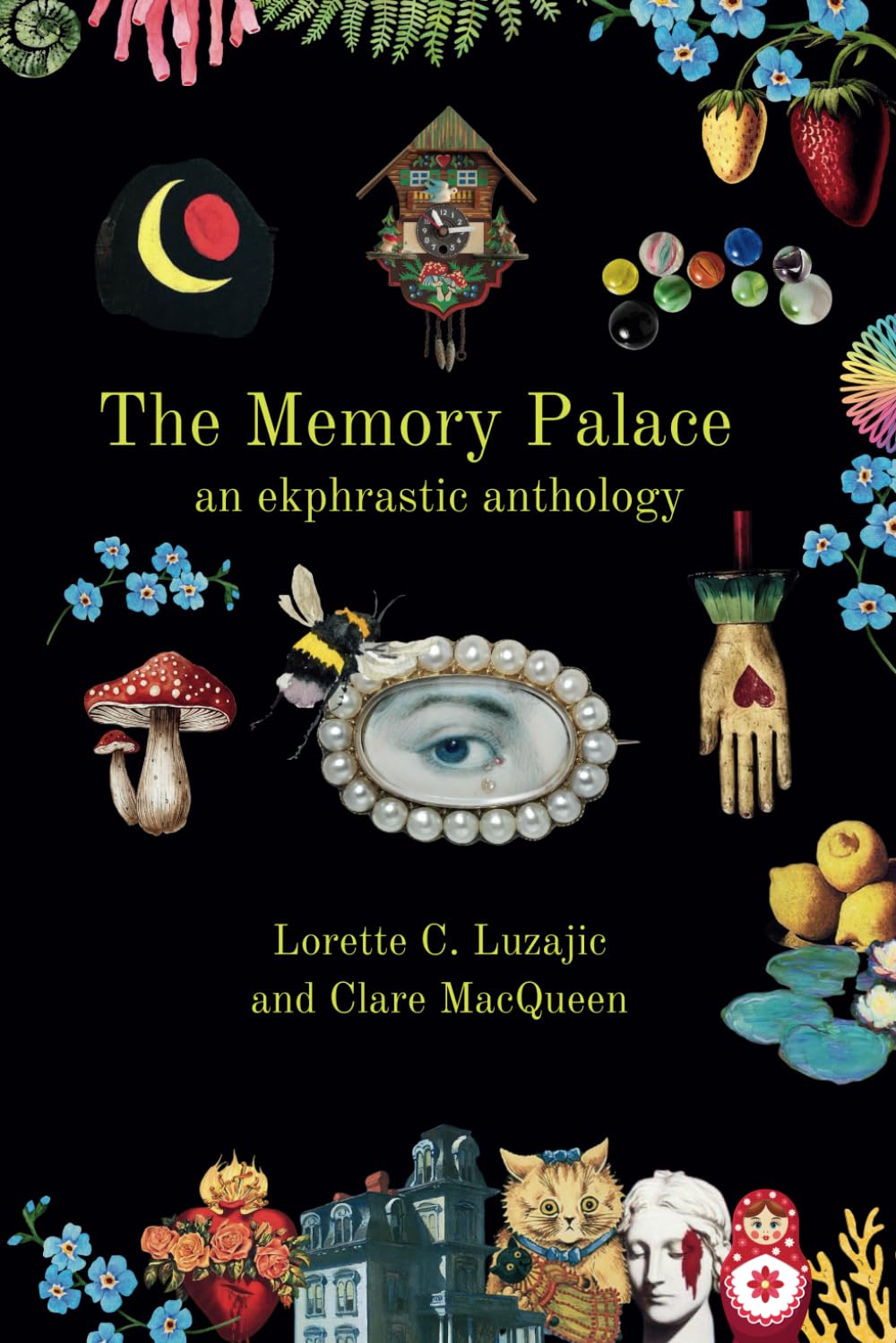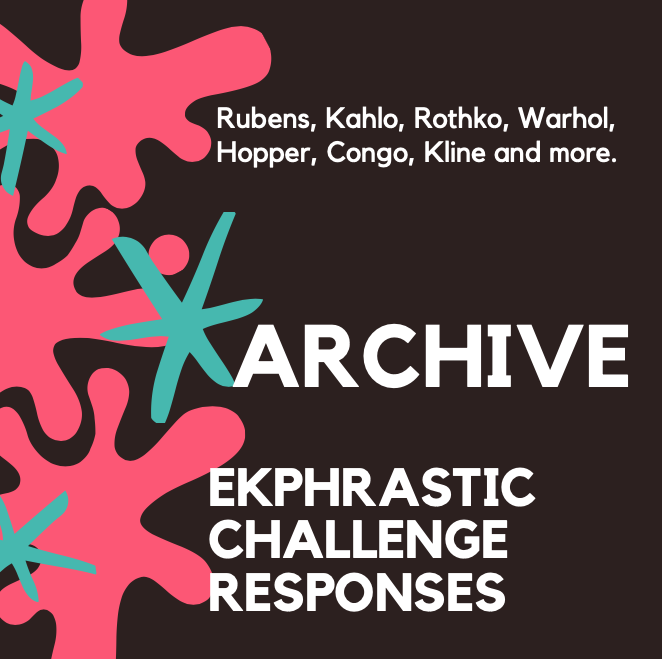|
Interview with Bill Arnott The Ekphrastic Review: Tell us a bit about the Gone Viking series, the success of the first one, your hopes for the new one, and how they came to be. Hi Lorette. Thanks so much for the invitation; I’m a huge fan of The Ekphrastic Review. Okay, let’s talk about the Gone Viking series, my nonfiction travel memoirs. The books include first-hand adventures, a bit of history and a good dose of humour. Gone Viking: A Travel Saga (RMBooks 2020) is the first of the series, where I introduce the fact “viking” was originally a verb, meaning to go voyaging. Which I did, embarking on an eight year odyssey, trekking the northern hemisphere in the wake of Scandinavian explorers. To my delight the book’s a bestseller that’s received a number of literary awards. For these expeditions I’ve been granted a Fellowship at London’s Royal Geographical Society, which I have to say feels like getting a seat at the grown-ups’ table for explorers. Gone Viking II: Beyond Boundaries (RMBooks 2021) picks up where the first book concludes, and covers ten years of personal travel across a broader swath of the planet, from the Americas to Europe, Asia and the South Pacific. The popularity of the books has spawned great engagement with readers. Our #GoneVikingCommunity appears on social media, with fun photos and reader shares from around the globe – individuals enjoying their copies of the book in different locales, often in a viking helmet or just having a laugh. It’s been a remarkable and humbling spillover from the books. You are famous for your travel writing, but have also tried your hand at ekphrastic writing. How do these forms intersect or compare for you? What are the similarities and differences? Like most writers, I write what I like to read, and I love exceptionally well-written travel literature. After years of reading the genre I realized many of my favourite authors were also poets. So I pursued poetry – taking classes, working with mentors – to simply improve my craft. Unsurprisingly, I came to love the medium in and of itself, with ekphrastic work being a particularly rich facet of the genre. Incorporating this into my writing, I feel, facilitates a much more compelling, sensory engagement. Now I no longer see good travel-lit “intersecting” with ekphrastic writing. I see these outlets as much the same thing. Every in-depth travel experience examines the artistic nature of what we see and our interpretation of it. I think almost everything is an art form influenced by or derived from other art. So I tend to see ekphrastic elements everywhere: sights, smells, touch, taste, and sound. When we’re open to experiencing the world you can’t help but find yourself immersed in ekphrastic influence and connection. How important is viewing art to you when you are travelling? I feel art viewing is essential to the travel experience, along with food, music, story-telling, flora and fauna. Art is one of those all-encompassing forms of expression, relaying history, land and people in an amalgamated manner. Plus, a gallery can be a lovely place to hang out when the weather’s crap. Tell us about your writing process. Do you jot notes in a journal all along the way, or use a tape recorder? Do you work as you go, or wait until the voyage is over to recount your memories? I incorporate a range of techniques, often finding something new to work in a given situation. I love including dialogue in my nonfiction, ideally with regional phonetics. But when I’m visiting with someone I’ll never break the flow by taking notes or recording the audio. I do my best to remember what’s said, and how it’s said, then write it down later. It becomes a bit of a test, like a performer learning lines, and it’s something I find not only challenging but rewarding, and when you get it right, supremely satisfying. When I’m on my own, however, on a plane, boat, bus or train, I’m invariably jotting notes of what I’m witnessing or what I’ve seen. More often than not honing a joke or two. Invariably another tributary to the thoroughfare reveals itself, and more often than not, another great ekphrastic opportunity! Tell us about the art in your corner of the world. You mentioned Emily Carr, who was an incredibly courageous painter who trekked into the wilderness and along the coast. There are stunning histories of regional indigenous arts, and a lively contemporary scene as well. Share your experiences of art travel at home in your own neck of the woods. I love that you’ve asked about these experiences in my neck of the woods, as it’s literally in the woods I’ve discovered common threads – creative bridges – between indigenous artists, Carr, and, yes, Viking artisans. One of those “eureka” moments took place on Vancouver’s North Shore on what’s called the Spirit Trail, a series of walks and hikes that traverse a blend of new and old growth forest along with residential and industrial development. It’s a place of crows, eagles and the occasional raven, frequent protagonists across a range of history and myth. It’s comprised of pockets of evergreen that feel as though you’ve wandered onto an Emily Carr canvas, and I found myself fighting an urge to check my trail shoes for spatters of oil in green. Like so many places, here on Canada’s west coast we’re privileged to be surrounded by great art. My current home is on Musqueam, Squamish and Tsleil-Waututh land, so I’m able to enjoy outdoor installations and carving sheds around the neighbourhood. Vancouver Art Gallery also features rotating exhibits of Carr’s paintings, and with regular gallery visits I’ve been able to enjoy a remarkable breadth of her work. In both Gone Viking: A Travel Saga and Gone Viking II: Beyond Boundaries I meet some amazing artists, not to mention pinpointing the inspiration for much of Carr’s art. I even stumbled onto a fascinating link between her most famous pieces and Viking sites around the British Isles. But I don’t want to spoil the surprise, so I’ll leave that reveal for the pages of my books (he said, cheekily). ** A History in Paint Excerpted From Gone Viking: A Travel Saga and Gone Viking II: Beyond Boundaries Weather’s turned again, changing like double jumps across a maritime checkerboard, determining the season. Clack-clack. Winter. Clack-clack. Summer. Two days after near-hyperthermia, we’re heading out to hike in shorts, tee-shirts and extra sunscreen. This is the southwest corner of England, the Penwith Peninsula. Rail lines end at Penzance (yes, where pirates come from). Roads end a smidge beyond that. And everything else (apart from water) truncates at Land’s End, a seaside cliff facing a dreamy expanse of North Atlantic. History says what lies beyond must be Avalon, mythic birthplace of the Lady of the Lake, the Queen who passed King Arthur his sword. But since the nineteenth century this stretch of the country with its tourmaline water and intense northern light has been a magnet for artisans – painters, potters, sculptors – all coming here to find, hone and share their craft. It’s home to the Newlyn School, one-hundred-forty years of painters capturing outdoors en plein air. Emily Carr was here, as a novice, painting beech trees and yews, before finding her place in the evergreen forests of British Columbia, Vancouver Island and Haida Gwaii, de facto eighth member to Canada’s Group of Seven. With packs cinched snug on our backs, we trek coastal path from Lamorna to Mousehole, following clifftops over sea, where it crashes onto ragged granite. We climb through Monterey pines, cypress, vine-wrapped maples, and wind-blown gorse under high canopies of ferns. Fat, black bumblebees buzz in fuchsia foxgloves and orange butterflies flutter along the trail. In the distance, St Michael’s Mount cuts a sharp image in clean air and bright sun. The trail meanders toward the pristine fishing village of Mousehole: an inn and pub at the quay, white-washed stone cottages and Cornish flags flying with pride—a white X on black background. Two artists work in oil on canvas at easels on the beach. Tide’s out and brightly coloured boats—skiffs and dories—are beached in the harbour, leaning rakishly, as though posing for the painters. The thread of land we’re traversing has attracted voyagers for millennia – Mycenaeans, Phoenicians, Romans – following the Stone Age they came for Cornish tin and copper, the makings of sculptures and tools in bronze. Then came the Iron Age and Vikings, until Spain assumed the role of marauders-du-jour in the late Middle Age. At Penzance we follow shoreline to Newlyn, the painters’ mecca. The smell of wood fires seeps from homes, making everything feel cozy and welcoming. We cross a swing bridge and pass the Art Deco Jubilee pool, built to commemorate King George V. The triangular concrete structure’s on a point of headland, built to cut crashing waves like a ship’s bow. Further on the promenade sit the Battery Rocks where Henry VIII built a barbican, fortified with bronze cannon to deter Spanish raiders. Ironically the Spaniards stole the cannon, possibly to the sound of yoink! We pass through Penzance’s wherry town – ferries from days of olde. I imagine the smell of pine tar and old port sounds – groaning sheets and billowing sailcloth, the roll of barrels on gangplanks and shouts of pidgin – a soundtrack to adventure. There’s a petrified forest just offshore, visible at low spring tide. The Fishermen’s Mission sits near the pier, overlooking the lighthouse and Newlyn docks, one of England’s busiest fishing ports. It’s famous for crab, but northerly light and endless shoreline are what draw painters like a muezzin’s call to prayer. St Michael’s Mount greets us, sitting like a chess piece in the bay. And from where I’m standing it aligns with Newlyn Lighthouse – a postcard view through salt air. A local guidebook describes the Mount as “one of those rare and singular objects which impresses the mind with sensations of veneration, pleasure and astonishment the instant it is seen.” St Michael’s, like Normandy’s Mont Saint-Michel, reflects pagan-Christian transition, power and propaganda the binding agents. St Michael was a dragon-slayer, same as Saint George. Whether there are different versions or multiple dragons, I can’t say. Point being these places – artist destinations – resonate with spirituality. From Newlyn we carry on through shallow sea – soft sand and warm ocean water – bare feet with pants rolled up, our very own pilgrimage, aptly enough, as this is St Michael’s Way, tributary to the Camino de Santiago de Compostela, what travelling artisans and pilgrim’s call The Way. Bill Arnott Read an ekphrastic poem by Bill Arnott here. Read Bill's review of editor Lorette C. Luzajic's ekphrastic prose poetry collection, Pretty Time Machine. Bill Arnott is the award-winning, bestselling author of Gone Viking: A Travel Saga and Gone Viking II: Beyond Boundaries. His work is published around the globe. When not trekking with a small pack, journal, and laughably outdated camera phone, Bill can be found on Canada’s west coast, making friends and misbehaving. Bill Arnott Archives - Rocky Mountain Books (rmbooks.com) Pre-order Gone Viking ll on Amazon.
1 Comment
6/28/2021 12:04:43 pm
Thank you again to Lorette C. Luzajic and The Ekphrastic Review for this wonderful opportunity, interview-visit and book excerpt!
Reply
Your comment will be posted after it is approved.
Leave a Reply. |
The Ekphrastic Review
COOKIES/PRIVACY
This site uses cookies to deliver your best navigation experience this time and next. Continuing here means you consent to cookies. Thank you. Join us on Facebook:
July 2024
|
